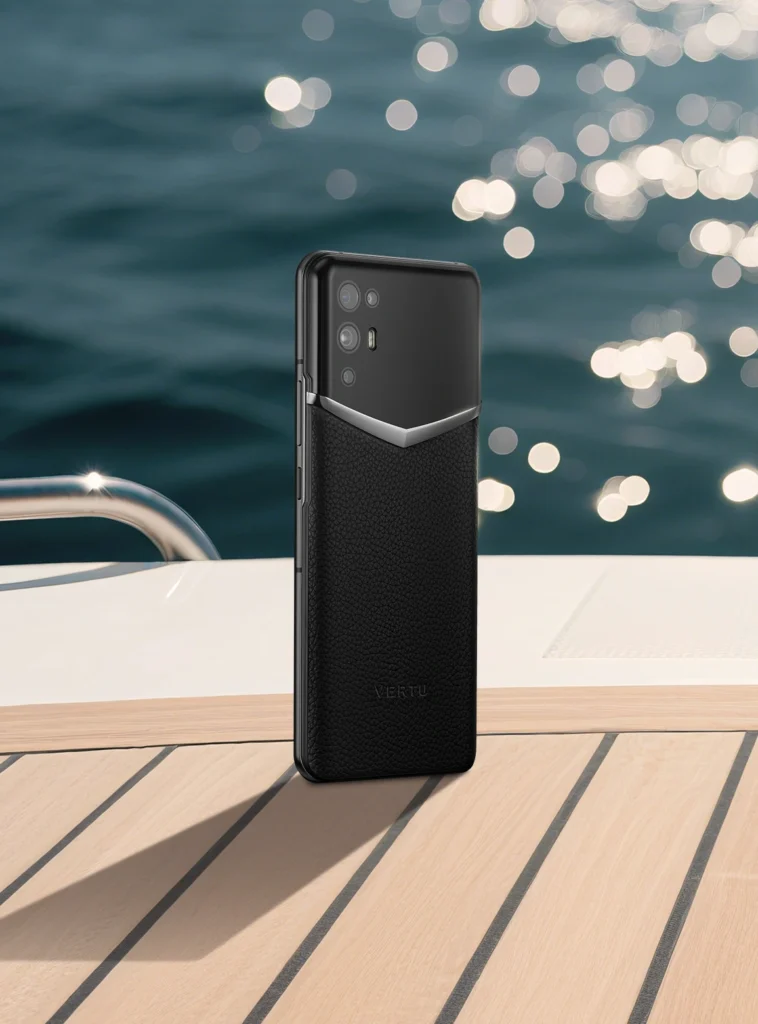Are you struggling to find an Android phone that truly harnesses the power of 5G? With so many options boasting impressive specs, understanding real-world performance is crucial for making the right 2025 purchase.
What You'll Learn:
- The essential features defining a top-tier 5G Android phone in 2025.
- How 5G spectrums (Sub-6 GHz vs. mmWave) and chipsets impact your experience.
- Interpreting benchmark scores and their relevance to your daily usage.
- Strategies for optimizing 5G speed and battery life on your device.
- Key brands and models to consider for peak 5G performance in the US.
Understanding 5G Android Phone Performance in 2025
Defining ‘Best 5G Android Phone': Key Features for 2025
In 2025, a “best” 5G Android phone goes beyond just having a 5G modem. It's about a holistic performance package. Key features to look for include:
- Advanced Chipset: A powerful processor designed for 5G, capable of handling high bandwidth and complex tasks.
- Ample RAM and Fast Storage: Crucial for seamless multitasking and quick app loading, especially with data-intensive 5G applications.
- Optimized 5G Antenna Design: Ensuring consistent signal reception across different 5G bands.
- Efficient Power Management: To combat the increased battery drain that 5G can sometimes cause.
- High Refresh Rate Display: For fluid scrolling and an immersive visual experience when streaming 5G content.
Navigating 5G Spectrum: Sub-6 GHz vs. mmWave in the US
The United States utilizes two primary 5G spectrum bands, each with distinct characteristics:
- Sub-6 GHz: Offers a wider coverage area and better penetration through obstacles, making it the backbone of most 5G networks. Speeds are generally faster than 4G LTE but not as extreme as mmWave.
- mmWave (Millimeter Wave): Provides ultra-fast speeds and massive capacity but has a very limited range and is easily obstructed by walls, windows, and even foliage. It's typically found in dense urban areas and specific venues.
When evaluating a 5G Android phone, check its support for both bands to ensure maximum compatibility and performance potential in different locations.
The Crucial Role of the 2025 Chipset in Performance
The System on a Chip (SoC) is the brain of any smartphone, and in 2025, it's more critical than ever for 5G performance. Manufacturers like Qualcomm (Snapdragon), MediaTek, and others are pushing boundaries with:
- Integrated 5G Modems: Newer chipsets often feature highly integrated modems that are more power-efficient and offer improved signal processing.
- AI Acceleration: For smarter network management, battery optimization, and enhanced camera capabilities.
- Advanced GPU and CPU Cores: Ensuring smooth operation of demanding apps, games, and multitasking, all while leveraging 5G's speed.
“The chipset is the engine that drives the 5G experience. Without a cutting-edge SoC, even the best 5G network won't feel truly transformative.” – Tech Analyst, Mobile Insights Group
Decoding Benchmark Results: What Matters for 2025 Buyers
Benchmark scores can be a helpful indicator, but understanding what they represent is key to making an informed decision.
Key Performance Metrics Explained: Geekbench, AnTuTu, and More
- Geekbench: Primarily measures CPU performance in single-core and multi-core tests. Higher scores indicate better general processing power, crucial for everyday tasks and app responsiveness.
- AnTuTu Benchmark: A comprehensive suite that tests CPU, GPU, memory, and UX (User Experience). It provides an overall score that gives a broader picture of a device's capabilities.
- 3DMark: Focuses on GPU performance, essential for gaming and graphically intensive applications.
- Speedtest.net: While not a synthetic benchmark, it's vital for real-world 5G speed testing, measuring download, upload, and ping.
How RAM and Storage Impact Your 2025 5G Android Experience
- RAM (Random Access Memory): More RAM allows your phone to keep more apps open in the background without slowing down. For 2025, 8GB is becoming the standard for mid-range devices, with 12GB or even 16GB offering a superior multitasking experience, especially when downloading large files over 5G.
- Storage: Faster storage (UFS 3.1 or UFS 4.0) significantly impacts app loading times, file transfers, and overall system responsiveness. The amount of storage is also important for storing high-resolution photos and videos often captured with advanced 5G-enabled cameras.
Display Refresh Rates and Their Effect on Smoothness
A high refresh rate display (90Hz, 120Hz, or even higher) makes on-screen motion appear smoother and more fluid. This is particularly noticeable when:
- Scrolling through social media feeds.
- Playing games that support high frame rates.
- Watching high-definition video content streamed over 5G.
While not directly a 5G performance metric, it enhances the perception of speed and responsiveness when combined with fast 5G connectivity.
Real-World 5G Speed and Battery Life in the US
Benchmarks are one thing, but how does a 5G Android phone perform in everyday scenarios?
Practical 5G Speed Tests: Evaluating Actual Performance
Actual 5G speeds can vary wildly based on location, carrier, network congestion, and the phone's ability to connect to the strongest available signal.
| Location Type | Expected Download Speed (Mbps) | Expected Upload Speed (Mbps) | Notes |
| Dense Urban Area (mmWave) | 1,000+ | 100+ | Limited coverage, line-of-sight dependent. |
| Urban Area (Sub-6 GHz) | 100 – 500 | 20 – 75 | Wide availability, good speeds. |
| Suburban Area (Sub-6 GHz) | 50 – 200 | 10 – 40 | Decent coverage, speeds can vary. |
| Rural Area (Sub-6 GHz) | 20 – 100 | 5 – 20 | Coverage is improving, speeds are sufficient. |
Note: These are general estimates for 2025 and can fluctuate significantly.
Optimizing Battery Life While Using 5G in 2025
5G can be more power-hungry than 4G. Here are ways to optimize battery life:
- Enable 5G Auto/Adaptive: Many phones allow the device to automatically switch to 4G when 5G speeds aren't necessary, conserving power.
- Turn off 5G when not needed: If you're in an area with poor 5G reception or not actively using data-intensive applications, switch to 4G LTE.
- Manage Background App Activity: Limit which apps can run in the background, especially those that consume significant data.
- Adjust Screen Brightness: A bright screen is a major battery drain.
Troubleshooting Common 5G Connectivity Issues
- No 5G Signal:
- Ensure you are in a 5G coverage area.
- Restart your phone.
- Check your carrier's network status.
- Verify your SIM card is properly inserted and provisioned for 5G.
- Slow 5G Speeds:
- Test in different locations.
- Ensure your phone supports the specific 5G bands your carrier uses.
- Check for software updates.
- Clear your phone's network settings.
- Frequent Dropped Connections:
- This can indicate poor signal strength or network congestion.
- Try moving to a different location.
- Contact your carrier for assistance.
Top 5G Android Phone Brands and Models for 2025
The US market in 2025 is dominated by a few key players, each offering compelling 5G devices.
Leading Manufacturers in the 2025 US Market
- Samsung: Continues to lead with its Galaxy S and Z Fold/Flip series, offering a wide range of 5G capabilities and premium features.
- Google: The Pixel line, particularly the Pixel Pro models, excels in software optimization and camera performance, with strong 5G integration.
- OnePlus: Known for delivering flagship performance at competitive prices, with its latest models boasting advanced 5G modems and fast charging.
- Motorola: Offers a diverse portfolio, from budget-friendly 5G options to more premium devices, often with a focus on clean software.
Comparative Analysis: Samsung Galaxy vs. Google Pixel
| Feature | Samsung Galaxy S25 Ultra (Example) | Google Pixel 9 Pro (Example) |
| Chipset | Snapdragon 8 Gen 4 (or equivalent) | Tensor G4 (or equivalent) |
| 5G Spectrum | Sub-6 GHz & mmWave | Sub-6 GHz & mmWave |
| RAM | 12GB / 16GB | 12GB |
| Storage | 256GB / 512GB / 1TB (UFS 4.0) | 128GB / 256GB (UFS 3.1/4.0) |
| Display | 120Hz Dynamic AMOLED 2X | 120Hz LTPO OLED |
| Camera | Advanced Multi-Lens System | Computational Photography |
| Battery Life | Excellent, with fast charging | Good, with adaptive battery |
Choosing Your Best 5G Android Phone Based on Needs
- For Power Users & Gamers: Prioritize phones with the latest flagship chipsets, ample RAM (12GB+), and fast UFS 4.0 storage. Samsung's Ultra series or high-end OnePlus models are strong contenders.
- For Photography Enthusiasts: Look for devices with advanced camera hardware and Google's computational photography prowess. The Google Pixel Pro series is hard to beat.
- For Value Seekers: Consider brands like Motorola or mid-range Samsung/OnePlus models that offer solid 5G capabilities and good overall performance without the premium price tag.
- For Everyday Use: Focus on reliable connectivity, good battery life, and a smooth user experience. Most major brands will offer excellent options here.
Beyond Benchmarks: Maintaining Peak Performance in 2025
Owning a powerful 5G phone is only half the battle; keeping it performing optimally requires ongoing attention.
The Impact of Software Updates on 5G Performance
Software updates are crucial for 5G performance. Manufacturers and carriers regularly release:
- Modem Firmware Updates: To improve signal reception, connection stability, and data speeds.
- OS Updates: Which can include optimizations for power management and overall system efficiency when using 5G.
- Security Patches: While not directly performance-related, they ensure your device is protected, preventing malware from consuming resources.
“Don't ignore those software update notifications. They are often packed with performance enhancements and bug fixes that can make a real difference to your 5G experience.” – Mobile Technology Reviewer
Best Practices for Optimal Phone Performance
- Regularly Restart Your Phone: This clears temporary files and refreshes system processes.
- Keep Apps Updated: Developers often release updates to improve app performance and compatibility, especially with new hardware and network technologies.
- Manage Storage Space: A nearly full storage drive can significantly slow down your device.
- Consider a Factory Reset (as a last resort): If your phone is consistently sluggish, a factory reset can restore it to its optimal state. Ensure you back up all your data first.
Understanding Carrier Aggregation and its Speed Impact
Carrier Aggregation (CA) is a technology that allows your phone to connect to multiple 5G frequency bands simultaneously. This combines bandwidth, leading to significantly higher download and upload speeds.
- How it works: Your phone and the network intelligently bond together different spectrum resources.
- Impact: Devices that support advanced CA configurations will generally achieve faster and more consistent 5G speeds, especially in areas with diverse spectrum availability. Always check if a phone supports the latest CA technologies for your carrier.
FAQ (Frequently Asked Questions)
Q: Do I need a new phone to get 5G speeds?
A: Yes, you absolutely need a smartphone specifically designed with a 5G modem to connect to 5G networks and experience its enhanced speeds and lower latency. Older 4G-only devices cannot access 5G.
Q: Will 5G drain my battery faster?
A: Potentially, yes. 5G radios can consume more power than 4G, especially when actively downloading large amounts of data or when the signal is weak and the phone has to work harder. However, advancements in chipsets and software optimization in 2025 models are significantly mitigating this issue, especially with features like 5G Auto.
Q: What's the difference between Sub-6 GHz and mmWave 5G?
A: Sub-6 GHz 5G offers broader coverage and better penetration through obstacles, providing good speeds for most users. mmWave 5G offers incredibly fast speeds but has a very short range and is easily blocked, typically found in very specific, high-density areas.
Q: How important are benchmark scores for choosing a 5G phone?
A: Benchmark scores are a useful indicator of raw processing power (CPU and GPU) and overall system performance. However, they don't tell the whole story. Real-world 5G speed tests, battery life, and the user experience are equally, if not more, important for day-to-day use.
Q: Can I get 5G speeds everywhere?
A: No, 5G coverage is still expanding. Speeds and availability will vary greatly depending on your location, carrier, and the specific type of 5G spectrum being used (Sub-6 GHz vs. mmWave).







